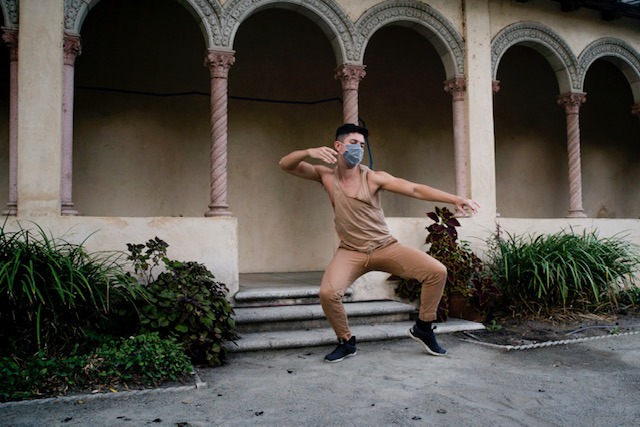Dance technique connects prisoners to outside world

Irvin Manuel Gonzalez, an assistant professor at Florida State University, performs a dance choreographed by Terry Sakamoto, a prisoner, at Claremont Colleges on Nov. 13, 2021. The dance was part of the “Dancing Through Prison Walls” project. Photo by Corina Silverstein, courtesy of Irvin Manuel Gonzalez.
Spanish songs greeted visitors as they spilled into the auditorium, awaiting a speech on dance.
Irvin Manuel Gonzalez, an assistant professor at Florida State University, hosted a talk on how Quebradita, a Mexican dance style, can help people in prisons connect with the outside world.
The event at Spurlock Museum on Feb. 23 focused on Gonzalez’s collaboration with the “Dance Through Prison Walls” project, where dancers taught prisoners choreography.
“There’s something about vibrating and pulsing on the same beat together that brings bodies together,” Gonzalez said. “It’s still a form of partner work where it’s not necessarily having to touch.”
With the limitation of physical contact, Gonzalez said he focused on teaching footwork and dance history to create community.
The program focused on giving imprisoned people a foundation once they got out of prison, Gonzalez said. Participants earned college credit and learned about dance as a viable career path.
He said the Quebradita dance style focused on Rasquachismo, the creative resourcefulness required to use that which is considered broken or useless.
“From an early stage in life, we learn to use our grandma’s butter container that also becomes a salsa container, then, all of a sudden, becomes Tupperware for something else,” Gonzalez said.
The Quebradita dance style was built on the exchange and renewal of dance techniques, Gonzalez said. Despite the Mexican-American border and xenophobia against Mexican immigrants, the Quebradita community grew through the exchange of pictures and videos.
He said there are parallels between the borders created by the countries and prison walls.
“The criminalization of migrants, [creativity] allows them to really tap into new ways of being and belonging,” Gonzalez said. “Despite the fact we’re facing harsh realities of deportation or incarceration.”
Through the combination of ice skating videos, hip-hop classes, Mexican dances and other influences, Gonzalez said people would combine different “scraps” to build a dance form unique to them.
“They’re using what they have around them, creating some new life and a new identity,” said Laura Perez, a senior at the University of Illinois at Urbana-Champaign.
Perez said she grew up learning about Quebradita, which was what piqued her curiosity in the event.
She said the imprisoned people designing the choreography surprised her, and she did not expect the prisoners to create dances because of the time and knowledge it required.

